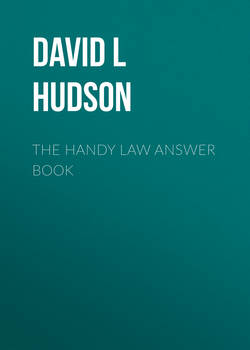Читать книгу The Handy Law Answer Book - David L Hudson - Страница 99
На сайте Литреса книга снята с продажи.
What is obscenity?
ОглавлениеObscenity refers to hard-core pornography that goes beyond so-called contemporary community standards. Obscenity is judged by the so-called “Miller test” from the U.S. Supreme Court’s 1973 decision Miller v. California (1973). The Miller test requires that material appeal predominately to the prurient (morbid or shameful) interest in sex, depict sexual material in a patently offensive way and have no serious literary, artistic, political, or scientific value.
For example, a federal district in Florida held that a rap music album filled with profanity and misogynistic language constituted obscenity. On appeal, the 11th U.S. Circuit Court of Appeal reversed and determined that the album As Nasty as They Wanna Be by the 2 Live Crew did not constitute obscenity, because the music (though profane) had some serious artistic value. Attorneys for the defendant produced several expert witnesses who testified as to the material’s serious artistic value.
The U.S. Supreme Court in Miller stated:
The basic guidelines for the trier of fact must be: (a) whether “the average person, applying contemporary community standards” would find that the work, taken as a whole, appeals to the prurient interest, Kois v. Wisconsin, supra, at 230, quoting Roth v. United States, supra, at 489; (b) whether the work depicts or describes, in a patently offensive way, sexual conduct specifically defined by the applicable state law; and (c) whether the work, taken as a whole, lacks serious literary, artistic, political, or scientific value. We do not adopt as a constitutional standard the “utterly without redeeming social value” test of Memoirs v. Massachusetts, that concept has never commanded the adherence of more than three Justices at one time…. If a state law that regulates obscene material is thus limited, as written or construed, the First Amendment values applicable to the States through the Fourteenth Amendment are adequately protected by the ultimate power of appellate courts to conduct an independent review of constitutional claims when necessary….
We emphasize that it is not our function to propose regulatory schemes for the States. That must await their concrete legislative efforts. It is possible, however, to give a few plain examples of what a state statute could define for regulation under part (b) of the standard announced in this opinion, supra:
(a) Patently offensive representations or descriptions of ultimate sexual acts, normal or perverted, actual or simulated.
(b) Patently offensive representations or descriptions of masturbation, excretory functions, and lewd exhibition of the genitals.
